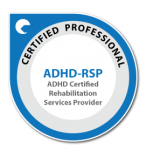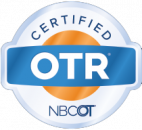

A few months ago, I realized that I have a common theme when I work with my clients. I lead them through a three-step process, regardless of their specific challenges. I was speaking on the phone to the mother of a potential client one day, and I described the steps out loud, then I said – hey, I like that! I’m going to write it down!
Never great at advertising or marketing, I didn’t have a kitschy little acronym or name for my process. I am an occupational therapist and an ADHD coach and yes, also a business owner. I’ve read some books, participated in some mastermind courses, but I still struggle to come up with campaigns that will make me more visible. I just do what I’m trained to do, which is work hard to help my clients be the best version of themselves in the moment.
After writing down what I had described to my client, I began to get used to naming the three steps whenever I worked with someone. I started using them in my phone consultations, and within a few weeks, I had a name: the 3 A’s needed for thriving with ADHD. I will describe them next.
I use an analogy here. No toddler who was just learning to walk every stood up and took a few steps for the first time, then fell down and thought “well, that’s it. I guess I’m not going to be a walker!” No, of course not. They got back up and tried again. They maybe held onto a hand or furniture, took a wider stance, went for a shorter distance. They for sure fell down many more times but guess what? They eventually got it! And with practice, tweaking the strategy, and persistence, my clients learn that they will be able to meet their goals!
Thriving with ADHD does not mean “fixing” something that is wrong. It means understanding what the challenges are that are due to ADHD, learning some ways to either overcome them, hack them, or live with them, and being able to evaluate when something is not working well and to change course.
Remember the 3 A’s when you want to help your child. I know this is difficult to do alone. I have many resources available to you, including one on one coaching and my workbooks. All can be found on my website. I also offer short helpful videos on my YouTube channel.




Copyright 2024 © Kids Empowered 4 Life. All rights Reserved.
All information on the Website is presented as informational only and is not a replacement for therapy assessment, diagnosis, intervention, or medical advice. The information provided on the Website is provided “as is” without any representations or warranties, express or implied. Kids Empowered 4 Life assumes no responsibility for errors or omissions that may appear in the Website.